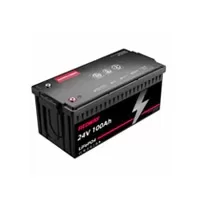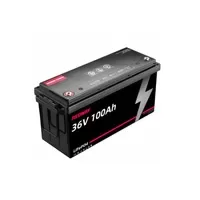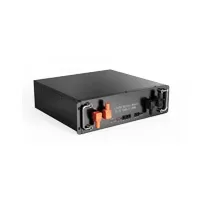(Click to Get a Quick Quote!)
Should I Charge LiFePO4 to 100%?
-
Avoid Charging to 100%: Charging LiFePO4 batteries to 100% capacity is generally not necessary and may not be recommended for optimal battery health. While LiFePO4 batteries can tolerate being charged to their maximum capacity, it is advisable to charge them to around 80% to 90% for regular usage. This balance between available energy and lifespan helps maintain the battery’s performance and extends its overall lifespan.
-
Optimal Charging Level: Charging LiFePO4 batteries to around 80% to 90% capacity is considered a recommended practice. This charging level ensures a good balance between the available energy and the battery’s lifespan. By not fully charging the battery, you can reduce stress on the battery cells and minimize the risk of capacity loss over time.
-
Long-Term Battery Health: Charging LiFePO4 batteries to lower levels, such as 80% to 90%, helps optimize their long-term health and performance. It is important to note that LiFePO4 batteries have a longer lifespan when they are not charged to their maximum capacity. By following this recommended charging practice, you can prolong the overall lifespan of your LiFePO4 batteries and ensure their reliable performance in the long run.
Can You Store LiFePO4 at 100%?
-
Avoid Storing at 100%: Storing LiFePO4 batteries at 100% charge for an extended period is not advisable. This practice can harm the battery’s long-term health and reduce its overall lifespan. It is important to avoid fully charging the battery before storage to prevent unnecessary stress on the battery cells.
-
Optimal Storage Charge: To maintain the health and longevity of LiFePO4 batteries during storage, it is recommended to store them at around 50% charge. This charge level helps balance the battery’s energy and ensures better performance when the battery is eventually used. By storing LiFePO4 batteries at this optimal charge level, you can minimize the risk of capacity loss and maintain their efficiency.
-
Long-Term Battery Health: Proper storage practices play a crucial role in preserving the health and performance of LiFePO4 batteries. Storing them at around 50% charge helps prevent overcharging and reduces the risk of degradation over time. By following this recommended storage practice, you can ensure that your LiFePO4 batteries remain in good condition and perform reliably when needed.
In summary, while it is possible to store a LiFePO4 battery at 100% charge without damage in the short term, taking steps towards preserving your battery’s long-term health should always be considered for maximum effectiveness.
Can You Store LiFePO4 Fully Charged?
-
Storing Fully Charged: While it is generally acceptable to store LiFePO4 batteries fully charged, it is important to consider the long-term implications. Storing LiFePO4 batteries at 100% charge for an extended period may lead to increased stress on the battery cells and potential capacity loss over time.
-
Optimal Storage Charge: To optimize the longevity and performance of LiFePO4 batteries during storage, it is recommended to store them at around 50% to 70% charge. This charge level helps prevent overcharging and reduces the risk of capacity loss. By maintaining the battery at this optimal charge level, you can ensure better performance when the battery is eventually used.
-
Consider Duration of Storage: If you plan to store LiFePO4 batteries for an extended period, it is advisable to store them at a slightly lower charge level, closer to 50%. This helps minimize the stress on the battery cells and reduces the risk of self-discharge. However, if the storage duration is shorter, storing the batteries at a higher charge level, around 70%, may be more suitable.
What Percentage Should I Store My LiFePO4 Battery?
-
Optimal Storage Percentage: It is generally recommended to store LiFePO4 batteries at around 40% to 50% of their capacity. This charge level helps maintain the batteries in optimal condition during storage. Storing LiFePO4 batteries at a slightly lower charge helps prevent overcharging and reduces the risk of capacity loss over time.
-
Benefits of Lower Charge: Storing LiFePO4 batteries at a lower charge level helps minimize the stress on the battery cells and reduces the risk of self-discharge. By keeping the batteries at around 40% to 50% capacity, you can ensure that they remain in good condition and are ready for use when needed.
-
Avoiding Overcharging: Overcharging can be detrimental to the health and performance of LiFePO4 batteries. By storing them at a lower charge percentage, you can prevent overcharging and minimize the risk of capacity loss over time. This practice helps preserve the longevity and efficiency of the batteries.
The Pros and Cons of Storing LiFePO4 at 100%
-
Pros of Storing at 100%: Storing LiFePO4 batteries at full charge allows for immediate use without the need for charging. This can be beneficial in situations where quick access to power is required. It eliminates the need to wait for the batteries to charge before use.
-
Cons of Storing at 100%: Storing LiFePO4 batteries at 100% charge for an extended period can have negative effects on their longevity. It can lead to accelerated degradation and reduce the overall lifespan of the battery. Over time, the battery’s capacity may decrease, and its performance may be compromised.
-
Recommended Storage Approach: To maintain the health and longevity of LiFePO4 batteries, it is recommended to store them at around 50% to 70% charge. This charge level helps balance the battery’s energy and ensures better performance when the battery is eventually used. By following this recommended storage practice, you can minimize the risk of capacity loss and maintain the efficiency of your LiFePO4 batteries.
FAQs
- Q: Can I leave my LiFePO4 battery on the charger after it reaches full charge?
- A: It is generally safe to leave a LiFePO4 battery on the charger after it reaches full charge, as these batteries have built-in protection circuits to prevent overcharging. However, for long-term storage, it is advisable to remove the battery from the charger and store it at a partial state of charge.
- Q: How often should I check the state of charge of my stored LiFePO4 battery?
- A: It is recommended to periodically check the state of charge of your stored LiFePO4 battery, especially during long-term storage. If the battery’s charge falls below the recommended level (around 40% to 60%), it is advisable to recharge it to the recommended storage level.
- Q: Can storing a LiFePO4 battery at 100% charge cause it to overheat?
- A: Storing a LiFePO4 battery at 100% charge for a short duration is unlikely to cause overheating. However, for long-term storage, it is best to store the battery at a partial state of charge to minimize the risk of overheating and capacity loss.
Conclusion
In conclusion, storing LiFePO4 batteries at 100% charge for extended periods is not recommended, as it can lead to capacity loss and reduced overall battery lifespan. It is advisable to store LiFePO4 batteries at a partial state of charge, around 40% to 60%, during long-term storage. Redway Power, as an expert in lithium batteries, offers high-quality OEM Lithium LiFePO4 batteries that provide excellent performance and reliability. Follow the recommended storage practices to ensure the longevity and optimal performance of your LiFePO4 batteries. Trust Redway Power for reliable and safe battery solutions.





























